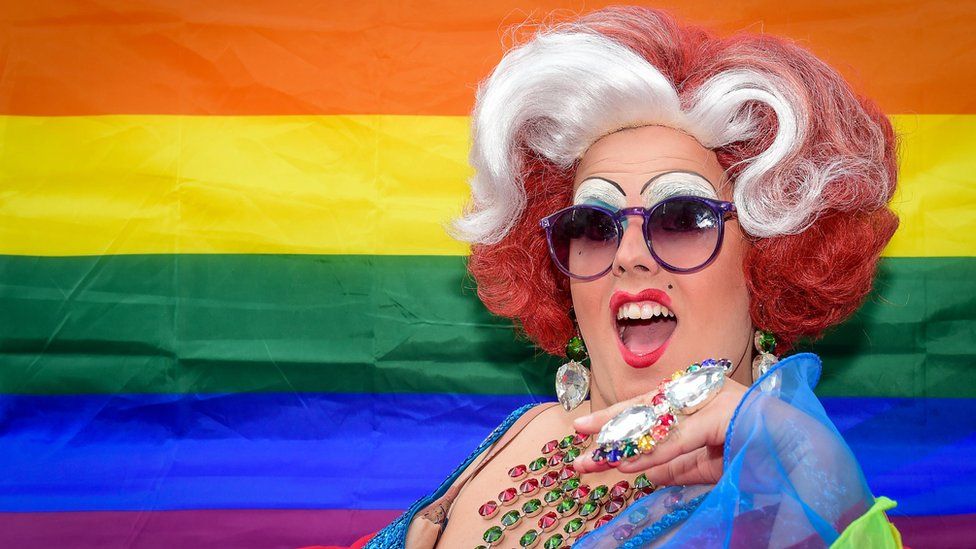Pride parade in London: Thousands join LGBT march
- Published

More than 26,000 people have joined the Pride parade through central London.
The annual march, now in its 45th year, marks 50 years since homosexuality was decriminalised in England and Wales.
The colourful parade took a 1.4-mile (2km) route through the city, starting at Portland Place and taking in Oxford Circus, Regent Street and ending at Whitehall.
A rainbow flag has been projected on to the Palace of Westminster for the first time in celebration of the event.
Mayor of London Sadiq Khan told crowds at Trafalgar Square the event was the "best antidote to sorrow".
He said: "We've had a horrible last few weeks. We've had terror, we've had tragedy.
"You know what the best antidote to sorrow, the best antidote to sadness, to bereavement, to hatred, is Pride In London."
Thousands attend Pride parade in London
A video message from Prime Minister Theresa May was also played in which she said the UK would challenge "governments that criminalise homosexuality or practice violence and discrimination" against LGBT people.
She added: "Here at home too, we must continue to stand up for true equality and respect for everyone, right across our United Kingdom.
"We must stamp out homophobic bullying in schools, and drive down homophobic and transphobic hate crime."
A number of stores and tube stations in London have been decorated with signs and posters using the colours of the LGBT flag.
The Parliament building will also be lit up at night in the Pride colours as part of the celebrations.
Lord Fowler, Speaker of the House of Lords, said: "Homosexuality is still illegal in over 70 countries around the world, including many in the Commonwealth.
"None of this will be solved by a march, or a display of lights in Westminster.
"But these acts will demonstrate to those who are being persecuted or abused that they are supported.
"The lights are a symbol of our support."
At the scene: Sarah Lee, BBC News
From start to finish, London's streets have been brimming with colour, music, and smiles.
The buzz has been electric, with participants dressing up as their favourite superheroes, fairies, and even the Queen herself.
Thousands of people from hundreds of organisations paraded down Oxford Street in a sea of sparkles and glitter on their way to Trafalgar Square.
The celebratory cheers were contagious - a truly wonderful atmosphere for all involved.
Staff from the Metropolitan Police, London Ambulance Service and London Fire Brigade were nominated to take part in the parade.
They joined flag bearers representing countries around the world, including those where it is still illegal to be LGBT.
The Met said it had been working closely with Pride in London and a detailed policing plan was in place.
The force added: "We know that recent events in London and Manchester will cause people to worry.
"As with any large event the Met's priority is public safety and we are working closely with the organisers."
LGBT Pride in London - then and now
The first official Pride march took place in 1972 and saw 2,000 men and women take part.
Last year's event saw more than 40,000 people join the march.
Are you taking part in London Pride? Have you travelled far to take part in the event? Email haveyoursay@bbc.co.uk with your stories.
Please include a contact number if you are willing to speak to a BBC journalist. You can also contact us in the following ways:
- WhatsApp: +44 7525 900971
- Send pictures/video to yourpics@bbc.co.uk
- Upload your pictures / video here
- Tweet: @BBC_HaveYourSay
- Send an SMS or MMS to 61124 or +44 7624 800 100
- Published8 July 2017
- Published8 July 2017
- Published25 June 2016
- Published1 July 2016